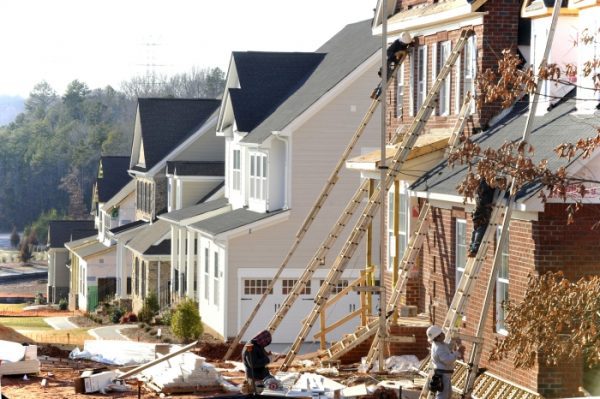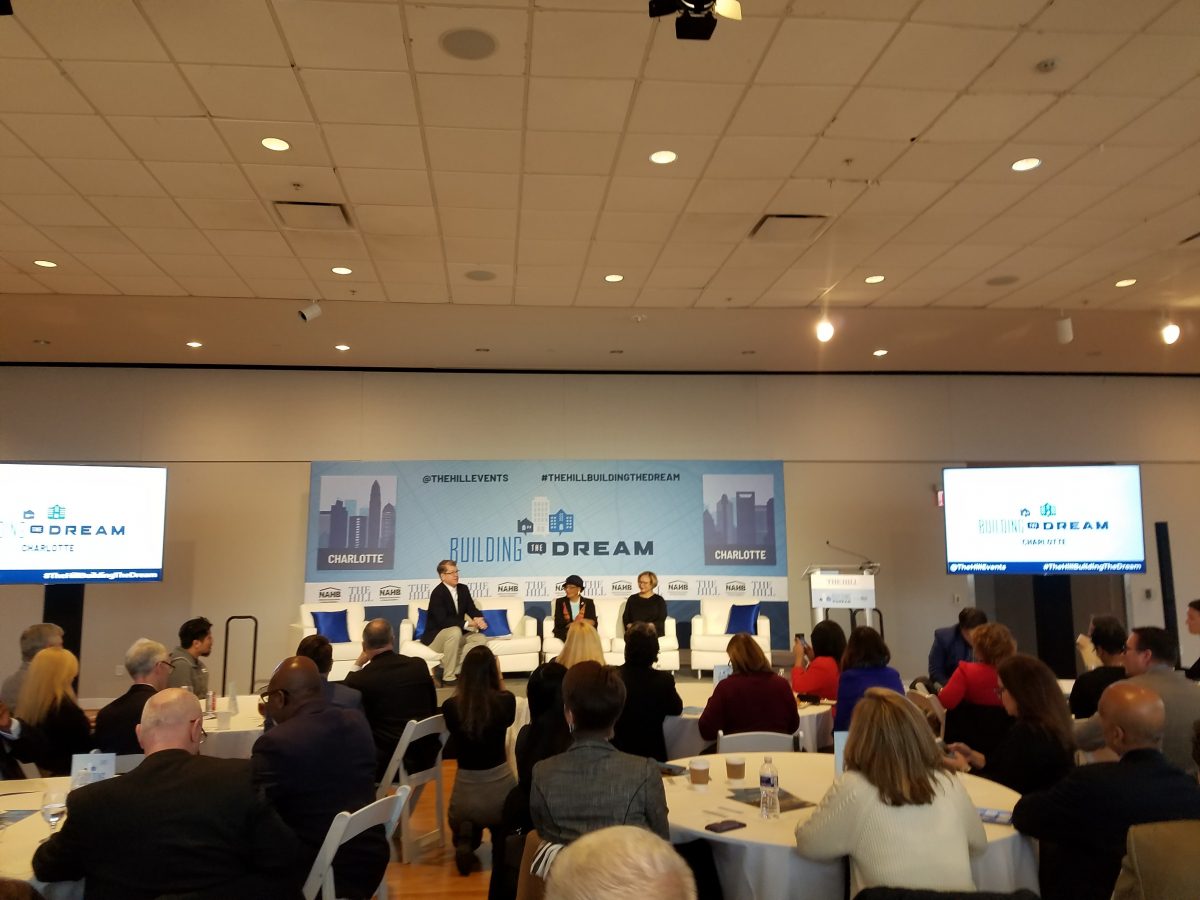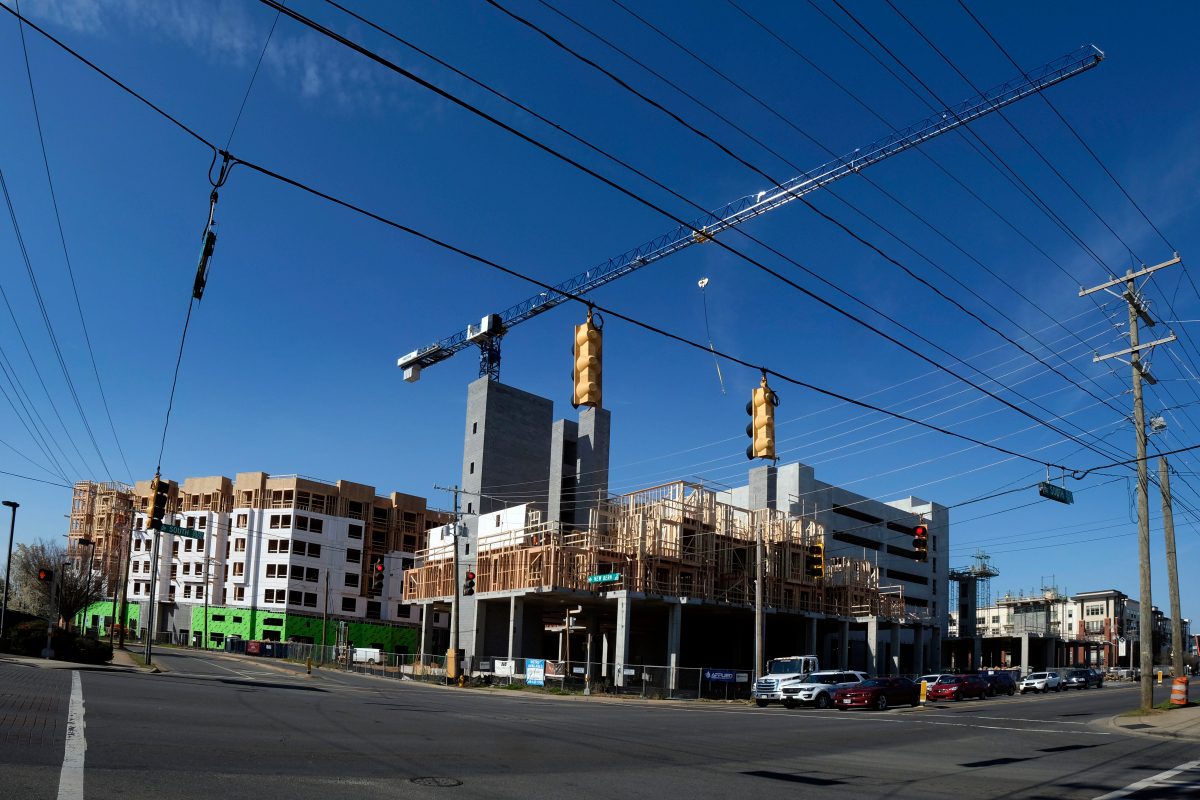Can we build our way out of the housing affordability crisis?

There’s a growing consensus that if we want to get out of the housing affordability mess we’re in, we need to hear a lot more swinging hammers.
While local governments, including in Charlotte, have raised more money to subsidize affordable apartments and low-income rent payments, the scale of the problem is daunting. Mecklenburg County is short more than 27,000 housing units for low-income residents, according to a report from the county and the Urban Institute last year. The city has roughly 1,000 subsidized units underway now, with more on the horizon, but the problem is too big for local government to simply underwrite a solution.
But instead of focusing on subsidies, it seems the focus has shifted. Policymakers, developers and housing advocates are all talking about the need to build more, and more of everything: single-family houses, duplexes, triplexes, quadplexes, townhouses and apartments. It’s fast become the conventional wisdom that we need to lower regulatory barriers, streamline the development process and unleash the power of the market on our housing problems by allowing as much density as possible.
The New York Times ran two features on the topic in a weekend: An analysis of whether new, upscale buildings drive up rents in gentrifying areas (probably not), and a feature about the years-long battle to build an apartment building on an empty lot next to a rail stop in a San Francisco suburb (neighbors won, and blocked the apartments). A “YIMBY” movement (for “Yes In My Backyard,” the opposite of NIMBYs) has sprung up in cities across the U.S. And municipalities from Minneapolis to Montgomery County, Md., to Raleigh have passed rules making it easier to build more density and add housing like backyard “accessory dwelling units” (Colloquially called “Granny Flats.” A character of the same name helped propel several pro-growth, pro-density Raleigh City Council candidates to victory last year).
Public events in Charlotte over the past month have echoed the theme. A forum by the Real Estate & Building Industry Coalition, the industry’s local lobbyist, brought Michael Stegman, an Obama administration official who argues for getting rid of single-family-only zoning as “the civil rights issue of our time” (the forum was rescheduled due to tornados; Stegman will speak at the State of Charlotte Housing Summit on Apr. 2). At the Urban Land Institute’s annual meeting in Charlotte, the group Up for Growth unveiled a housing affordability calculator. It allows you to see how various policy changes would affect the ultimate cost of rent at a new apartment project in Charlotte.
The message is clear: Extend the length of time it takes to get zoning approval and construction permits, and rents go up $30, $40, $50 a month. Shorten them, and rents go down.
And the National Association of Home Builders sponsored a forum with the theme of “Building the Dream” forum last week. Panelists talked about the need to recognize low wages, segregation, the racial wealth gap and the influx of Wall Street-backed investors buying houses as major reasons we’re seeing more people struggle to afford a house.
But again and again, the speakers returned to a need for more building and less onerous regulation.

Charlotte Mayor Vi Lyles and Congresswoman Alma Adams (center) at the Building the Dream event in Charlotte. Photo: Ely Portillo.
“We have to go up in density,” said Pam Wideman, Charlotte’s director of Housing & Neighborhood Services.
“It’s a primary, root cause” of affordability challenges, State Sen. Paul Newton said of land use regulations and development standards that can hold up a project. “The discretion kills you. Time is money.”
Mayor pro tem Julie Eiselt talked about the possibility of doing away with the standard, suburban three unit-per-acre zoning that covers many single-family neighborhoods, in favor of denser building.
“Do we look at no longer having R-3 (zoning)?” Eiselt asked. It’s an idea Charlotte deputy city manager and chief planner Taiwo Jaiyeoba has said merits study.
Charlotte clearly needs more housing. The Canopy Realtor Association said in January that home prices in the Charlotte region rose over 10 percent from a year ago. At the same time, the inventory of homes for sale plunged 28.1 percent, to the lowest level on record.
Single-family home building has plunged, while new apartments have surged. Despite thousands of new apartments on the market, the vacancy rate remains below 6 percent while rents march steadily upward.
[Read more: Single-family construction once dominated Mecklenburg, but that’s changed]

Apartments under construction at the New Bern light rail station on the Blue Line. Photo: Nancy Pierce.
For housing advocates, the “build it all” philosophy offers a potentially enticing deal: Help solve the affordable housing crisis without billions of dollars and massive new spending programs.
For developers (a group often maligned in public discourse as greedy or uncaring), the allure is obvious: Build more and still be on the side of good.
Indeed, the Washington Post editorial board noted on Sunday: “It creates a convergence of interests between two key groups — the construction industry and advocates for social justice — not normally thought of as political allies.”
Still, some key questions remain. Among them:
Building more density sounds great, a lot of the time. But how will it play out when specific development plans meet specific parcels?
A hearing at this month’s zoning meeting about a developer’s plan to build eight houses near Mallard Creek Park showed the issue in microcosm.The local area plan calls for four houses, not eight, on the site. City planners told council they support the plan because the site is near a park and adjacent to open space (a golf course).
But the area plan calling for four units was approved just a few years ago. Council members seemed leery of bucking such a recent plan to add more density there.
“If the recent area plan calls for four, we have to do better than doubling it,” said Eiselt. The mayor agreed. A decision on the plan could come next month.
Those questions about density will play out hundreds of times across our city in the decades to come.
As Wideman put it: “That’s a difficult conversation to have around the dais on Monday nights when neighbors are coming out against it.”
How do we balance increasing density with historic preservation, traffic concerns and community change?
Charlotte has been criticized as a city that tears down its history to make way for the next shiny building. Traffic is an ever-growing worry, and neighbors are often opposed to projects that might dump more cars on already-crowded roads. And desirable neighborhoods are facing more and more pressure from gentrification and denser infill, potentially changing the fabric of local residents and businesses.
Weighing the value of historic preservation, finding some way to mitigate traffice and blunting the impacts of gentrification against the benefits of building more could be another difficult conversation in Charlotte.
Will prices actually come down?
That may be the most important question. There isn’t as much definitive research on this question, at least at a local level, as you might expect.
We understand intuitively that increasing supply should tamp down prices. One reason houses cost so much more than they did five years ago in Charlotte is because there are barely half as many houses for sale, but just as much, if not more, demand.
But on a more granular level, how much would building, say, 2,000 more high-end homes in Charlotte bring down prices overall? What about 4,000, or 8,000? And for whom? What if a large portion of them end up sitting vacant, as is the case with New York City luxury apartments? Will new high-end housing encourage more landlords to sell in gentrifying neighborhoods, leading to displacement? Will more homes in Gastonia have an impact on prices in Mint Hill? What about high end townhouses built in Plaza Midwood — would those slow price rises in that neighborhood, or accelerate price appreciation in nearby, gentrifying areas? Or both, at the same time?
Researchers are digging into these questions, but the housing market is big, complex and varies hugely from place to place. And the research there is doesn’t always support higher density equaling lower cost, or even relaxed regulations resulting in more construction. A study published last month in Urban Affairs Review found that upzoning land around Chicago transit stations didn’t result in increased housing production, but prices for existing housing did go up.
Another study last year in Urban Studies contended that housing is less of a problem related to inequality than wages, employment and skills. As for upzoning and building more densely? It mainly leads to building high-end housing in desirable locations,” co-author Andrés Rodríguez-Pose told CityLab.
Whatever solutions are found, they’re likely to be long-term, complex and multifaceted.
“People say things like we’ve got to reduce the cost of construction. We’ve got to get government regulation down,” said Charlotte mayor Vi Lyles at the National Association of Homebuilders forum.
But, while she said local government should look at changing regulations, using public land and finding more creative financing, we shouldn’t ignore low wages and other systemic issues. “Building is a lot easier than actually solving the problem.”